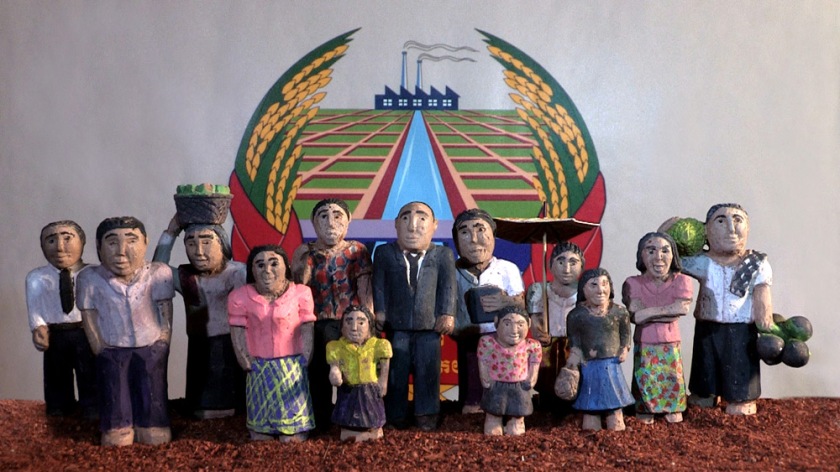Solenn Delesvaux, Teacher of French as a foreign language in Phnom Penh, Cambodia.
It was last September. Sitting on the edge of the stage, small, bearded, his two bare feet hanging in space in the front of a crowded screening room, Rithy Panh was answering the public after the projection of his last movie, The Missing Picture.
Pictures indeed lack to point the horror that involved every family of the country during the days the Angkar (the Red Khmers’ regime) made disappear one person out of five for the sake of a society pictured as agrarian between 1975 and 1979. There are only a few archived pictures left by the executioners, those of a rotten propaganda. The individual who is filming sometimes stays a little longer on a position, recording unwanted information, one of those that would have scratched the regime. These are the small nuggets Rithy Panh thoroughly looked for during his research at Bophana Centre, now showing these pictures chopped off by censorship, attesting a sort of resistance or perhaps awareness among the executioners.
Small terra cotta characters are modeled, carved out then naively painted under the sight of a fixed camera. Figurines awake in the 60s surrounded by the sound of Khmer rock that Phnom Penh is nowadays trying to rehabilitate in one of the city’s bar (The Cloud). However, little by little as the characters cover themselves with black clothes, an outfit imposed by the regime, people fatefully start to disappear one after another in a succession of crossfading. Irremediably left alone, the young main character grabs his face with his hands, his eyes left wide open with horror.
The story takes another dimension when, carefully wrapped in the storyteller’s bashfulness, we get to know the identity of the man who let himself starve to death or the identity of this young child who cries on her bench for hours before kissing the silence forever. We come closer to the director, moving on tip-toes. What should we think of these children denunciating their parents believing they were doing the right thing, mutating right away into executioners? What should we say about the scheduled disappearance of any familial ties?
Rithy Panh gave birth to this movie for his people, both in a restraint and large meaning, for his loved ones slaughtered by the ideological machine as well as for the younger Cambodian generations confronted to their family’s silence, some people refusing to recall their memories on atrocities, others perhaps having too much to hide.
The conference is leading to its end. The small man’s bare feet still swing with nonchalance; he looks terribly at ease in this intimidating position, sitting in front of nearly a hundred pairs of eyes. He confesses the picture he misses the most. It will be the picture of his two parents in an advanced age, by his side.

